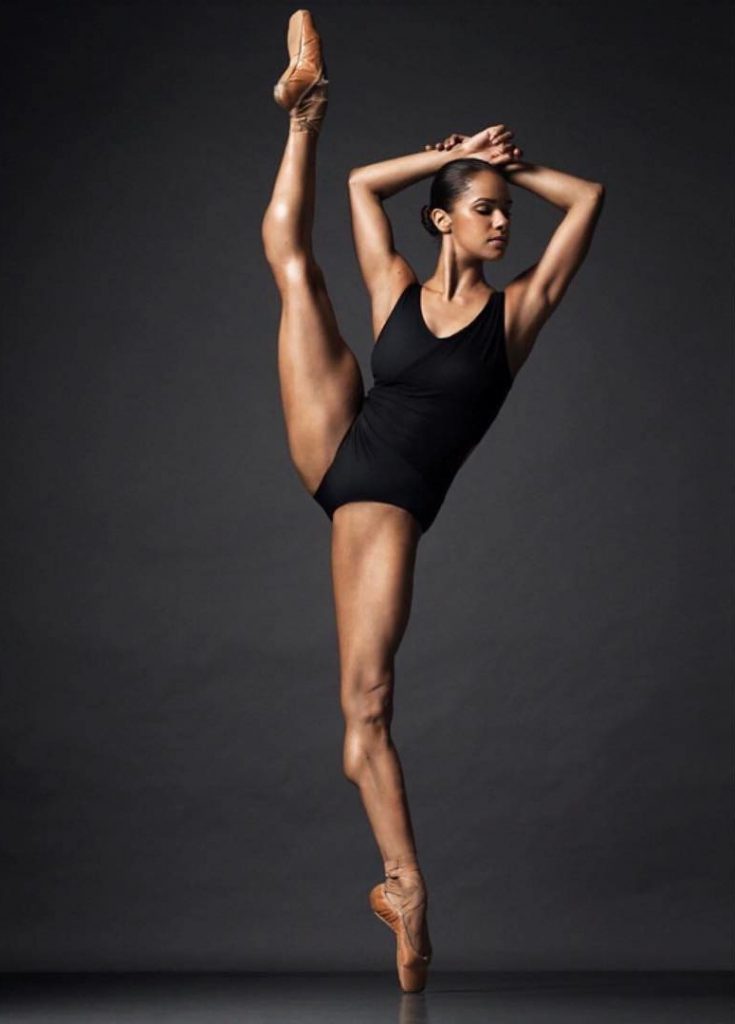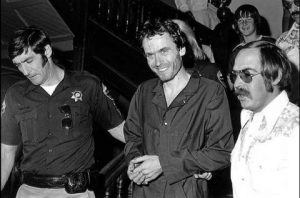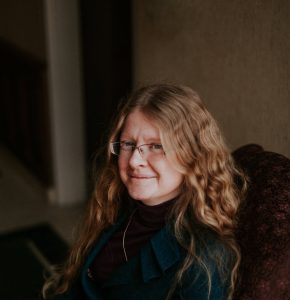“Et un et deux et trois” (and one, and two, and three), are the countless hymns that a typical ballet dancer hears from the rise of dawn to long after sunset. Their long hours in the studio, being constantly on their feet (known as releve), becomes their everyday regime, including exaggerated arm extensions and feet so numb that they do not even feel the blisters from their point shoes; these are examples of the sacrifices and commitments that young ballet dancers experience to make the top one percent that become professionals. An aspiring young African-American woman named Misty Copeland was born to break all barriers in the dance world and change the image of what a ballerina should look like. Misty grew up in a household of five siblings, to a mother of multiple marriages, and to a father who was nearly absent from her life for twenty years; she became American Ballet Theater’s first African-American ballet dancer.1 She is world renowned for her acclaimed performances and the statuesque perfection that has made her an elite dancer. Growing up, she never realized her potential, because of her constant fight for her mother’s attention among her other siblings. Copeland soon realized her passion for dance when she performed dance routines at home to a Mariah Carey chart topper. With no formal ballet or gymnastics experience, she tried out for her middle school drill team, following in her older sister’s footsteps; the elite dance team was recognized for winning countless statewide competitions.2

Even though Misty’s frame was regarded as petite, at thirteen years old Misty was able to use her assertiveness that she gained at home to become captain of the drill team. She was praised for her natural grace and finesse on the dance floor, which later came to the attention of her classically trained coach, Elizabeth Cantine. Off the dance floor, Copeland struggled with the difficulties that her family was enduring. In the year 1994, after her mother’s various friends and boyfriends, her family moved into a small two bedroom Inn in Gardena, California. Along with her brothers and sisters, Misty slept on the floor with only blankets. She regards this memory as, “The hardest time in my childhood,” saying that she made up for the chaos at home by working doubly hard at school.3
Misty’s dance career began at a later age than that of most elite dancers; the average dancer begins training between the ages of four and eight, but her formal training did not begin until age thirteen. Copeland’s middle school drill team coach encouraged her to attend the Boys and Girls Club, where a ballet instructor, Cynthia Bradley, taught free ballet classes once a week. Misty originally declined the offer because her mother did not have a car, and was working twelve to fourteen hours a day, and her oldest sister Erica was working two jobs. But Instructor Bradley began picking Misty up from school. Copeland was able to demonstrate how others’ preconceptions can be disproved with raw talent, “You can start late, look different, be uncertain, and still succeed.”4 Within her brief three months of training with Bradley, Copeland had mastered the French technique of en pointe, which signifies standing on the tip of your toes in ballet shoes, something that takes most ballerinas years to master. As her training became more intensive, Misty began spending most of her hours at the studio, which angered her mother, who told her that she would have to give up ballet. However, Bradley saw a spark of passion in Misty, and offered to host her during her training, as many trainers do for professional athletes. Her mother concluded that it was the best option, considering that their home life was unstable. Copeland explained that the feel of slippers and leotards gave her a sense of confidence and empowerment; she felt like she finally fit in. She had a place to call home and a sport to idolize: “Ballet was so structured. I’d been craving something that could guide me.”5 In the year 1998, at the age of fifteen, she won first prize in the ballet category of the Los Angeles Music Center Spotlight Awards.6

However, that same year a custody battle ensued between the Bradleys and Copeland’s mother. Misty had to return home to her mother, and they had frequent arguments. Her mother had long resented the Bradleys’ influence of homeschooling, Christian religion, and far more personal attention with Misty, and ultimately she decided that Misty would have to cease her continuation with the Bradleys. Misty was distraught with the fear that she would not be able to continue her dance career. The Bradleys then helped Misty to emancipate herself, which was a procedure common among young performers for securing their financial and residential independence. After Misty’s mother received the emancipation documents, she hired famous feminist attorney Gloria Allred and applied a series of restraining orders, which included the Bradleys’ five-year-old son. The order was partly intended to preclude contact between the Bradleys and Misty, but it did not have proper legal basis, since there had been no stalking or harassment.7 The custody controversy was highly publicized in the press: “The attention was devastating,” she says. “I had been so private. It was scarring.”8 After Misty’s mother stated that she would make sure Copeland could dance, both emancipation papers and restraining orders were dropped.
Copeland then began attending San Pedro High School, and continued to study at Lauridsen Ballet Centre in Torrance, California. In 2000, Copeland won another full scholarship, this time to American Ballet Theater’s intensive summer program; and soon after, she became the only African-American woman in a group of eighty dancers. Though she was challenged by her difference, not only her skin color but also her body type, always more full figured than her peers, she nevertheless climbed the ranks by virtue of her exceptional skill.9 In 2007, she became the company’s first African-American female soloist in two decades, with notable performances in The Firebird (2012), in Le Corsaire (2013), and in Swan Lake (2014), to name a few. Copeland’s inspiring story made her a role model and pop icon. She is a New York Times Bestseller in Ballerina Body, a memoir Life in Motion, and Firebird, an inspiring children’s book that shows that through hard work and dedication any young dancer can become a Firebird.10 “I had moments of doubting myself, and wanting to quit, because I didn’t know that there would be a future for an African-American woman to make it to this level. At the same time, it made me so hungry to push through to carry the next generation. So it’s not me up here and I’m constantly saying that it’s everyone that came before me that got me to this position.”11
- Encyclopedia Britannica, 2016, s.v. “Internet,” by Naomi Blumburg. https://www.britannica.com/biography/Misty-Copeland (accessed February 18, 2018). ↵
- Kristen Mascia, “Misty Copeland on Love, Life, and Leaps of Faith,” Elle Magazine, May 29, 2014, 1. ↵
- Kristen Mascia, “Misty Copeland on Love, Life, and Leaps of Faith,” Elle Magazine, May 29, 2014, 1. ↵
- Misty Copeland, Life in Motion (New York: Scholastic Inc, 2017), 262. ↵
- Kristen Mascia, “Misty Copeland on Love, Life, and Leaps of Faith,” Elle Magazine, May 29, 2014, 1. ↵
- Encyclopedia Britannica, 2016, s.v. “Internet,” by Naomi Blumburg. https://www.britannica.com/biography/Misty-Copeland (accessed February 18, 2018). ↵
- Misty Copeland, Life in Motion (New York: Scholastic Inc, 2017), 263. ↵
- Kristen Mascia, “Misty Copeland on Love, Life, and Leaps of Faith,” Elle Magazine, May 29, 2014, 1. ↵
- Encyclopedia Britannica, 2016, s.v. “Internet,” by Naomi Blumburg. https://www.britannica.com/biography/Misty-Copeland (accessed February 18, 2018). ↵
- Macey Morales, “Acclaimed Author, Ballerina Misty Copeland to serve as 2018 National Library Week Honorary Chair,” American Library Association. December 5, 2017, http://www.ala.org/news/press-releases/2017/12/acclaimed-author-ballerina-misty-copeland-serve-2018-national-library-week. (accessed February 18, 2018). ↵
- The Biography.com website, Misty Copeland Biography, https://www.biography.com/people/misty-copeland (accessed February 18, 2018). ↵



87 comments
Andrew Dominguez
This article was written well and provided information on a individual people are not aware off. Its hard to believe Misty mother would take legal action against family that was helping her daughter when she couldn’t. What i liked is even though her body was different than most she didn’t give up on her dream. Another interesting part is she was one of the first African Americans to be able to preform.
Noah Laing
I enjoyed reading this article, because Misty’s story is inspirational and one of a kind. She was able to use ballet as a way to express herself and help her escape from her past and struggles that weighed heavily on her. While doing all of this Misty was able to lead by an example and be a role model too many as she went against odds and discrimination to achieve an abundance of success.
Kimberly Simmons
It is so wonderful to read such an endearing story; Misty truly defied all expectations and set the bar higher than anyone could have imagined. I know very little about the world of ballet, but this article clearly portrayed the story of a strong, talented African American dancer. Despite her struggles mentally and emotionally, she managed to become not only a role-model to others, but the best version of herself.
Saira Castellanos
I am sure that Misty is one of those rare ballerinas that master this art so quickly. I have never heard of her but she is fascinating. I have seen many documentaries where the ballerinas have a troubled past, and dancing is their only outlet. I know that being a ballerina is brutal from the things i have seen, but they are able to do it so gracefully and effortless. I guess this is was Misty went through. Maybe the training wasnt too brutal for her because it came so easily to her.
Edgar Ramon
Being a ballerina sounds like it involves persistence and repetition so it was probably her struggles at home that helped her endure the day to day training that made her elite. I remember my little sisters when they did ballet, although it only lasted till they were about 15, I guess that’s when they decide they want to continue on or find some other activity. That is about all I know having to do with ballet, which is pretty much all opinion. All in all, good job.
Reese Lujan
Ballerinas have always fascinated me the way they can be on their tiptoes dancing, leaping, smiling, just being so graceful and light on their feet like how wonderful and majestic. I had never heard about Misty before this article and it’s amazing to see how quickly she picked up the art and mastered it in such a short amount of time. The fact that she was so determined despite her troubling experience with family and such is quite admirable if you ask me.
Alexandra Lopez
I don’t really read up on ballerinas but I do watch some films. In these films, most of the dancers go through so much to obtain a certain status in their profession. Reading this article surely put those movies to shame. Misty was such a young girl, but most ballerinas start at a much younger age. Being who she is, knowing what she’s accomplished and what her journey was to get there, is inspiring to everyone reading this article. I am amazed and moved by Misty Copeland’s journey.
Carlos Vazquez
Ballerinas are some of the most hard-working performers out there. The amount of time, effort and injuries, make it incredibly hard for someone to make it to the top. It is incredible to see that Misty was able to persevere and defied all the norms of elite ballet. This article is really well written and it does a good job at describing her struggle to make it to the top.
Nathan Hudson
This article was very interesting, I do not personally watch ballet, but I know without a doubt that it one of the most tasking things someone can do. This is an amazing story of a woman who overcame all the odds that were against her and followed her dreams. I am so inspired by her and her determination. I had no idea who Misty was before this, but I am very glad I was able to come across this article.
Yahaira Martinez
This article was very informative and was very motivating to the reader. All this young woman wanted to do was dance to forget about the chaos that she had going on at home, and she ensured that that was all that was going to occur for the rest of her life. Amidst the custody battles and family trouble, she strived to be nothing but the best at what she did and set a pathway for younger girls looking up to her. Very great article.